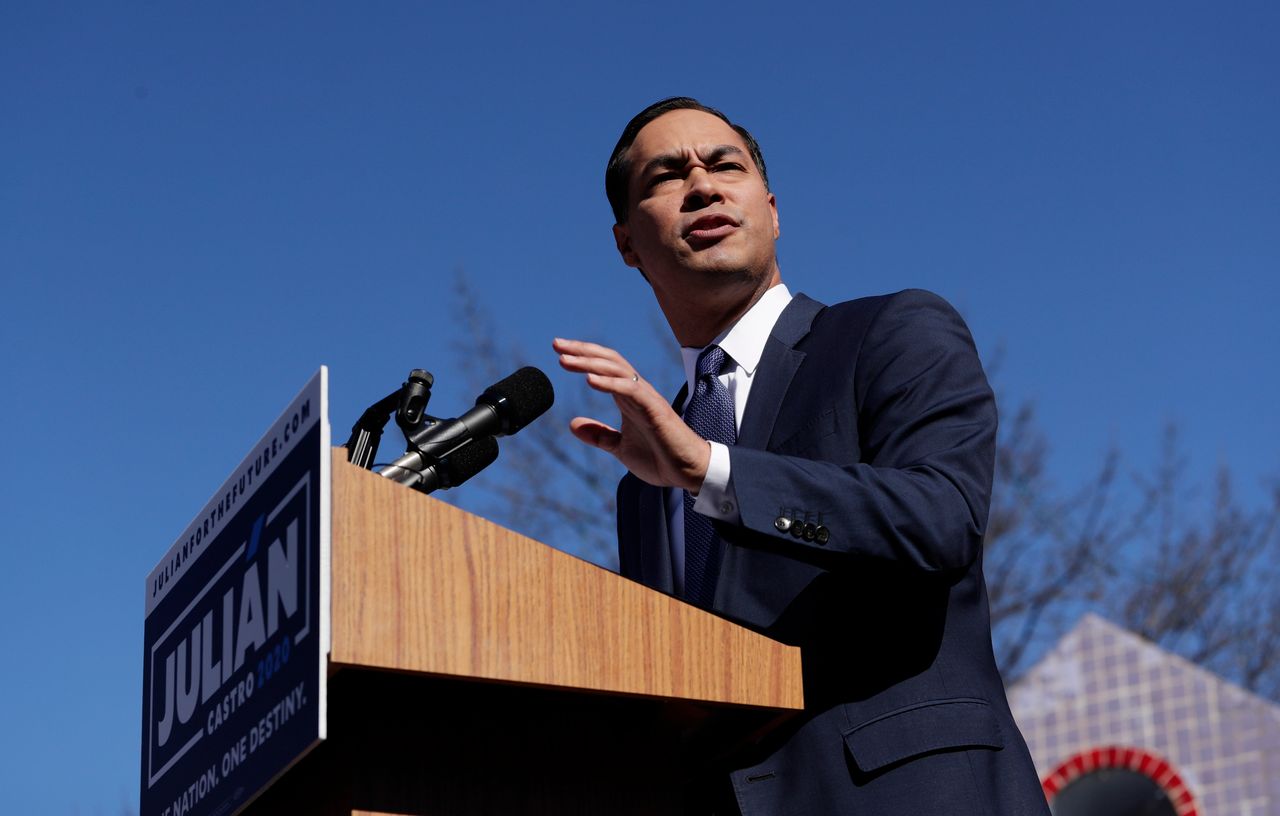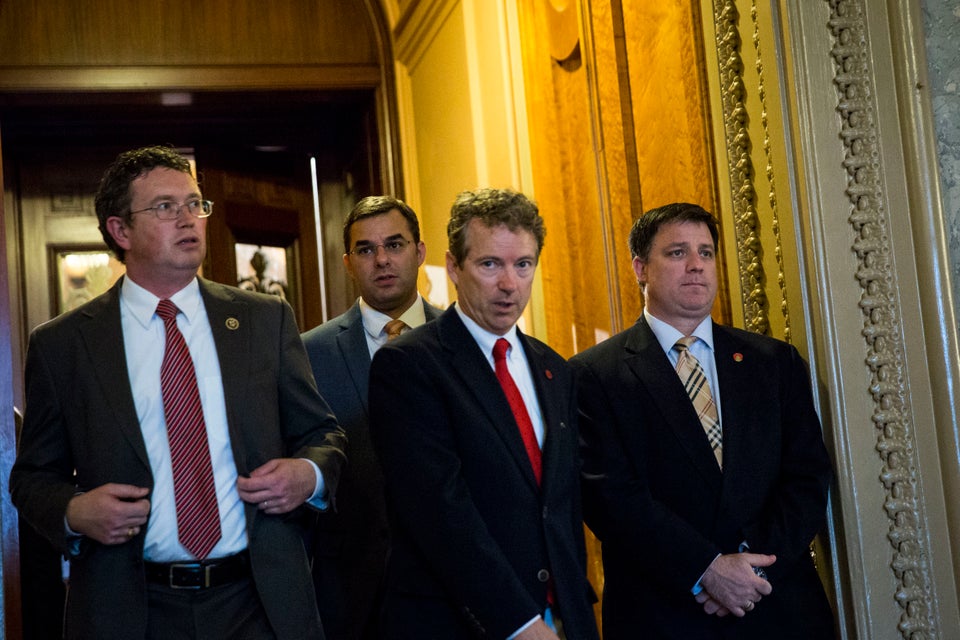When Julián Castro announced his presidential candidacy in San Antonio, Texas, on Jan. 12, he promised to apply his experience as a former secretary of housing and urban development to address the escalating cost of living.
“We have a housing affordability crisis in this country,” he said. “But you know what? You hardly ever hear about that in politics. That’s going to change. We will invest in housing that’s affordable to the middle class and to the poor.”
Housing is a deeply under-discussed issue, and Castro seems uniquely poised to tackle it. But during his time as housing secretary under President Barack Obama, Castro faced scrutiny for exacerbating the home affordability crisis. He inherited a problematic program that activists say he should have worked more quickly to address, and he oversaw the sale of tens of thousands of mortgages to Wall Street’s foreclosure mill. And it took years of bruising public pressure to get him to change course.
If Castro does take on housing as a signature theme, he’ll have to grapple with these criticisms.
“Homeowners and tenants had been trying for years to get his attention to the problems in this program,” said Maurice Weeks, at the time a housing rights organizer for the Center for Popular Democracy, which organizes low-income families. “The only way that happened was when his name was more in the public setting and... more people were paying attention.”
Privatizing A Public Function?
The housing crisis, of course, well predated Castro’s time as HUD secretary. From 2006 to 2014, more than 9.3 million homeowners lost their homes to foreclosure or a similar arrangement. The crisis had a disproportionate effect on black homeowners, who were targeted for predatory loans.
Banking reform experts, low-income advocacy groups and their progressive allies in Congress were desperate for the Obama administration to do more to stop a vicious cycle plaguing American households whose mortgages were “underwater,” meaning that they owed more to a lender than the home was worth.
It worked like this: A distressed homeowner, no longer able to borrow against their home and likely suffering from the economic downturn, might lose their house to foreclosure. That, in turn, would depress the value of their neighbors’ homes and jeopardize homeownership on an entire block.
“They basically shoveled [the mortgages] out the door in a fire sale to get rid of them and make some money without thinking about what the better thing would have been to do.”
- Julia Gordon, National Community Stabilization Trust
Former Rep. Brad Miller (D-N.C.), who served on the House Financial Services Committee from 2003 to 2013, called on the federal government to address the crisis through the kind of direct action it employed during the Great Depression. He wanted the Obama administration to buy up the mortgages of homeowners facing foreclosure and reduce their debts.
The Obama administration balked at the idea of a new, large-scale program moving troubled mortgages off bank balance sheets and into government stewardship. But under HUD’s program for first-time homeowners and borrowers with moderate earnings, the government already had direct control over thousands of loans.
“Here was an agency that had a lot of homes, had the power to renegotiate them and did not,” Miller said, referring to HUD.
Instead, in 2012, then-HUD Secretary Shaun Donovan created the Distressed Asset Stabilization Program to sell off the mortgages of first-time homeowners whose lenders had effectively given up on them. The goal of the program, which turbo-charged existing home-sale initiatives, was to replenish HUD’s badly depleted finances and ― at least in theory ― to help homeowners facing foreclosure.
In practice, however, the program’s focus on rapidly selling the homes to minimize HUD’s losses took priority over relieving homeowners ― and Wall Street came out on top.
“They basically shoveled [the mortgages] out the door in a fire sale to get rid of them and make some money without thinking about what the better thing would have been to do,” said Julia Gordon, a former federal housing policy official who ran housing policy at the liberal Center for American Progress from 2012 to 2015.
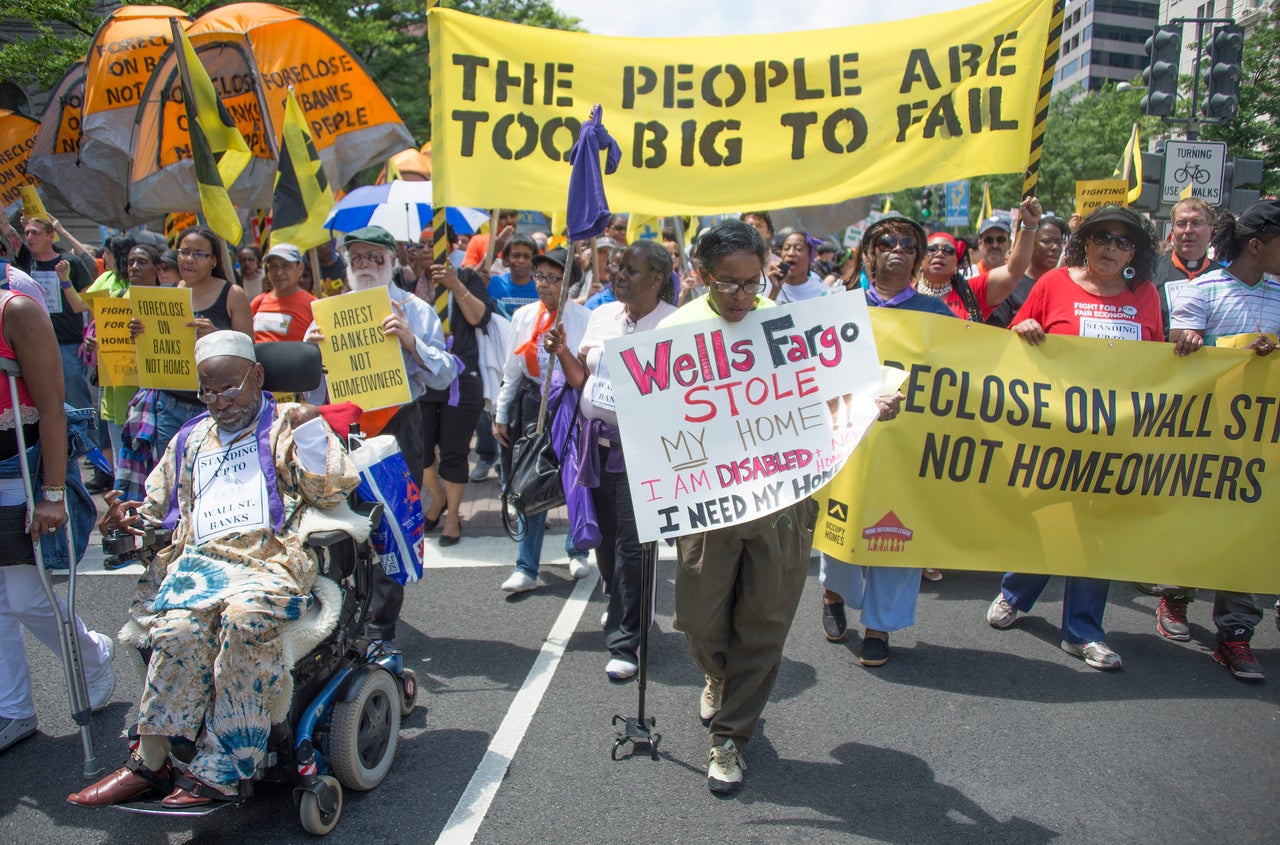
A Windfall For Wall Street
Some two years into the HUD program’s existence, housing advocates had finally amassed the nationwide data to substantiate the problems they were seeing in individual neighborhoods. A September 2014 report commissioned by the Center for Popular Democracy calculated that 97% of HUD’s mortgage sales had gone to for-profit firms, including private equity giants like Blackstone. Just 3% of all loans sold resulted in families keeping their homes, according to the report.
Worse still, many homeowners would learn that the government had sold their homes to large Wall Street firms only after the sale had occurred. In other words, the homeowner would now have to negotiate with a large Wall Street firm that had far less of a commitment to helping the homeowner than the government did.
“Waking up one day and finding you don’t have a HUD mortgage anymore and you don’t even know how that happened and you no longer have any of these protections, that’s just not right,” Gordon said.
Defenders of HUD’s home-sale program and others like it have argued that it was better than nothing, given the state of the mortgage market.
But “better than nothing” is a low bar to clear during a crisis. Even if HUD wanted to get the loans off its books, it could have prioritized sales to nonprofits that worked to keep families in their homes.
“There are a number of ways they could have done it differently,” said Gordon, who is now executive vice president of the National Community Stabilization Trust, a nonprofit that restores vacant properties in low-income neighborhoods.
The HUD sales also accelerated a troubling trend in the American housing market by helping large private equity firms and hedge funds get into the landlord business. Companies that bought mortgages from HUD at bargain-basement prices often converted them to single-family rentals. Where Wall Street once helped fuel a foreclosure crisis through predatory lending, it is now overseeing an eviction crisis as a landlord in the very neighborhoods hit hardest by the foreclosure bust.
A December 2016 study conducted by the Federal Reserve Bank of Atlanta found that in Fulton County, Georgia ― which suffered greatly in the foreclosure crisis ― large firms are 8% more likely to evict families from single-family homes than small landlords.
“It’s what is now driving the new housing crisis, which is the affordable housing crisis,” said Jonathan Westin, executive director of the nonprofit New York Communities for Change, which has called for a ban on bulk purchases of homes by private equity firms.
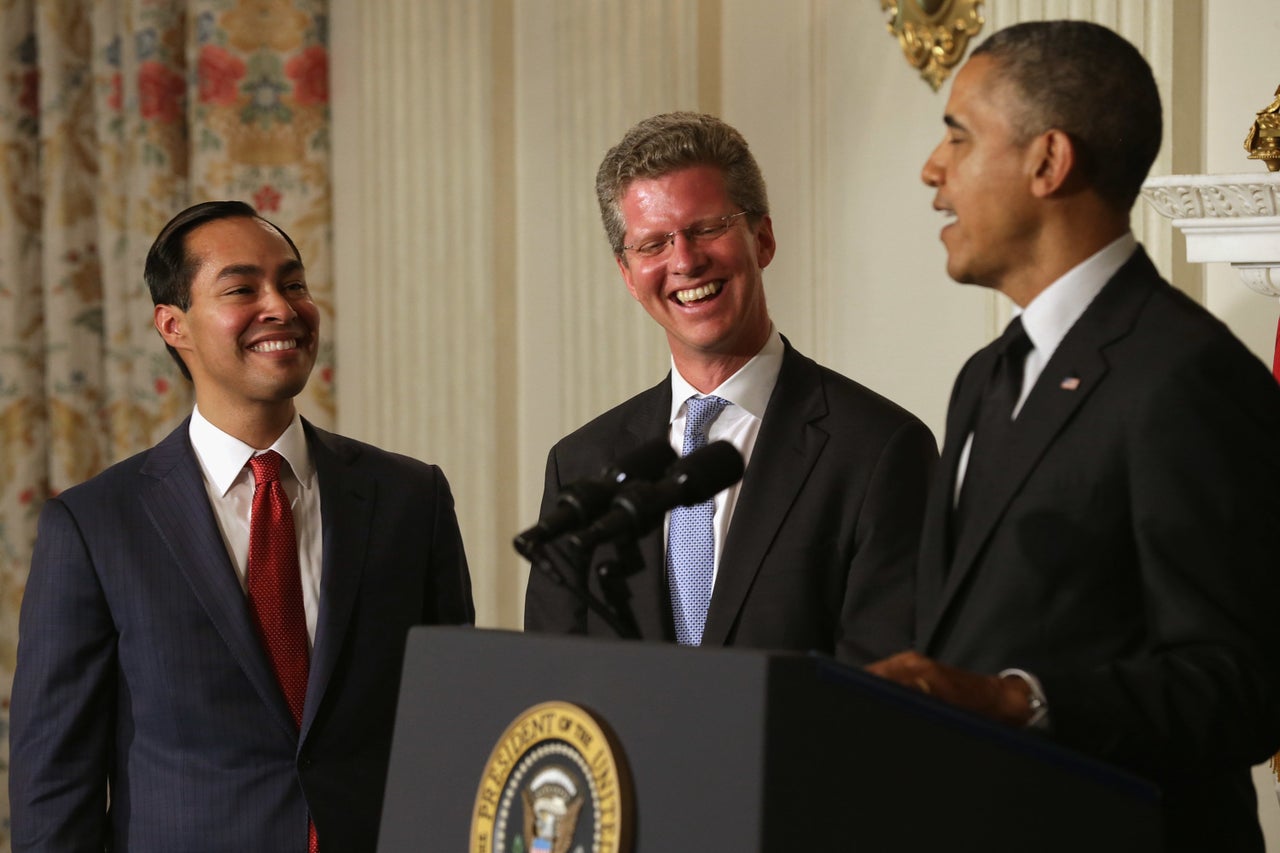
Criticism Of Castro
Julián Castro took over as HUD secretary in July 2014, serving until the end of the Obama administration in January 2017. He did not set up DASP ― rather, he inherited the program and its problems, something even his harshest critics concede.
But activists claim he was slow to respond to their calls for reform. “There was this enormous period of time where the buck stopped with him,” said Weeks, who is now a co-executive director of the Action Center on Race and the Economy.
Shortly after releasing its September 2014 report, the Center for Popular Democracy and allied organizations staged protests outside HUD offices in 10 cities demanding an end to DASP. About a year later, in September 2015, Sen. Elizabeth Warren (D-Mass.), a persistent Wall Street critic now competing with Castro for the Democratic presidential nomination, lent her voice to the movement, calling for significant reforms to DASP and similar practices by the government-sponsored lenders Fannie Mae and Freddie Mac. (Warren’s campaign declined to comment for this story.)
In response to activists’ demands, HUD made some changes to DASP ahead of the July 2015 sale, with the aim of including more nonprofit home-buyers and reducing foreclosures.
Castro’s presidential campaign points to a big drop in the number of DASP sales from 2014 to 2015 as evidence that Castro was responsive to criticism of the program early in his tenure. HUD’s sales under the program peaked in 2014 at over 54,000 loans, for a total of $9.4 billion. In 2015, the first full year of Castro’s stewardship, sales volume fell to 11,000, for about $2 billion. HUD maintained roughly similar figures in 2016.
But it’s hard to know how much of that drop was driven by a decline in the number of those loans left on HUD’s books.
“My suspicion is that the inventory of mortgages was smaller,” Miller, the former North Carolina representative, said.
And the loans that HUD was still selling were going overwhelmingly to Wall Street. Over 98% of the loans HUD sold in 2015 went to for-profit financial institutions, according to HUD’s own data. As of January 2016, just 10,000 of the 105,000 homeowners whose homes were sold through DASP had negotiated mortgage modifications that allowed them to keep their homes. Affordable housing advocates remained frustrated, demanding that the federal government use its weight to force greater write-offs of homeowners’ debts.
They saw an opening in April 2016, when Castro’s name appeared on shortlists of candidates for Hillary Clinton’s running mate. The left-leaning coalition that had come together in September 2014 launched the “Don’t Sell Our Homes To Wall Street” campaign, which included an online petition targeting Castro by name.
“Those folks would not have done that if they felt that they had Castro’s ear,” Miller said.
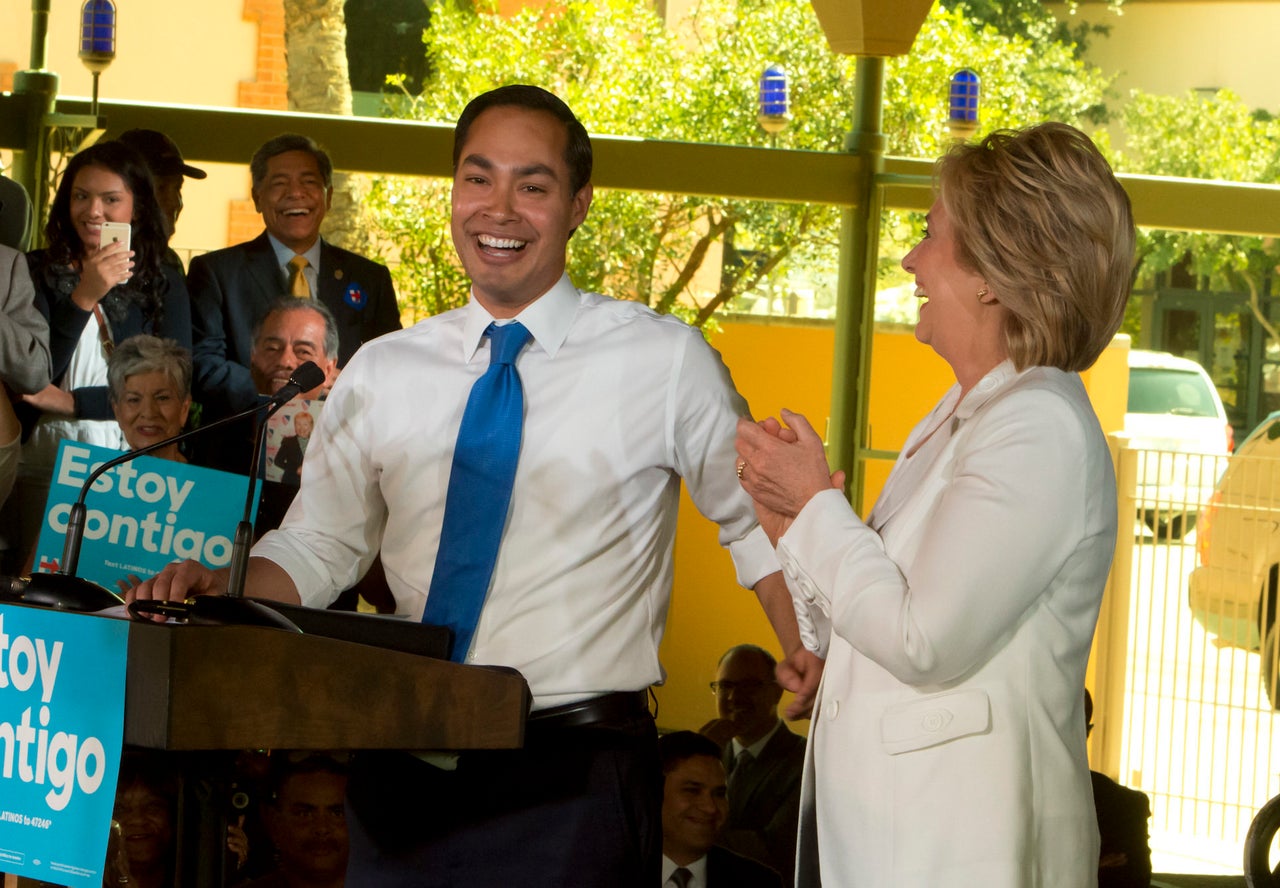
The public pressure paid off. HUD announced in May 2016 that it would be implementing new rules for DASP aimed at requiring buyers to offer better terms to distressed homeowners, including forgiveness of “principal,” or the primary amount that homeowners owed on their mortgage. The change effectively allowed for the cancellation of portions of housing debt that homeowners would never be able to pay off ― exactly what Miller and anti-foreclosure experts had always advised.
“It wasn’t until Castro was on the VP shortlist that [progressive groups] created enough pressure to be effective,” said Maurice Mitchell, national director of the Working Families Party, which backed Sen. Bernie Sanders (I-Vt.) in the 2016 presidential campaign.
Still, Mitchell said, “to his credit, he made the reforms.”
Castro addressed criticism of the program at a CNN town hall on April 11, claiming that he began enacting meaningful changes shortly after arriving at HUD ― not as late as May 2016.
“We listened to the critics and we started making changes soon after I got to HUD so that more people could stay in their homes, that when a property did have to be sold, that more of them would be sold to nonprofits and to community organizations that cared about community,” he said.
“To his credit, he made the reforms.”
- Maurice Mitchell, Working Families Party
Asked for their response to the specific claim that he did not adopt reforms that had a real impact until May 2016, Castro’s campaign did not provide any statements defending his record.
But in exchanges with HuffPost, Castro’s campaign framed the 2016 reforms as an improvement to DASP in keeping with the spirit of Castro’s previous changes, rather than a significant shift in his approach. A spokesperson also painted the housing groups’ decision to publicly target Castro in April 2016 as a political attack meant to take Castro out of consideration for a vice-presidential spot.
And there’s no question that the housing mess was an administration-wide failure ― a problem that encompassed the Treasury, the Department of Justice and the White House itself. Mike Lux, whose nonprofit American Family Voices participated in the April 2016 escalation against Castro, conceded that some of the rhetoric targeting him was “over the top.” He maintains that senior officials in the White House were the real obstacle to reform, not Castro himself.
But Lux believes the decision to pressure Castro during his consideration for the vice presidential nod was key to the coalition’s success. It was the “only way” the White House was going to stay out of Castro’s way, Lux said.
“As soon as the White House backed off, he moved pretty directly toward the coalition,” Lux said. “From that perspective, I came away impressed with the way that Castro handled it.”
Amy Schur, campaign director of the Alliance of Californians for Community Empowerment, was less charitable.
“Julián Castro and his team had an opportunity to create a great program for affordable housing, and instead they chose to tinker around the edges to make a terrible program a little bit better,” she said.
Miller insists that real progress will require Castro ― and any other Obama administration official associated with the failed home-sale program ― to acknowledge the degree of harm the program caused.
“Rather than protecting homeownership and putting a tourniquet on foreclosures, they just sold them off,” he said. “If anything, it made the housing and foreclosure crisis worse.”
